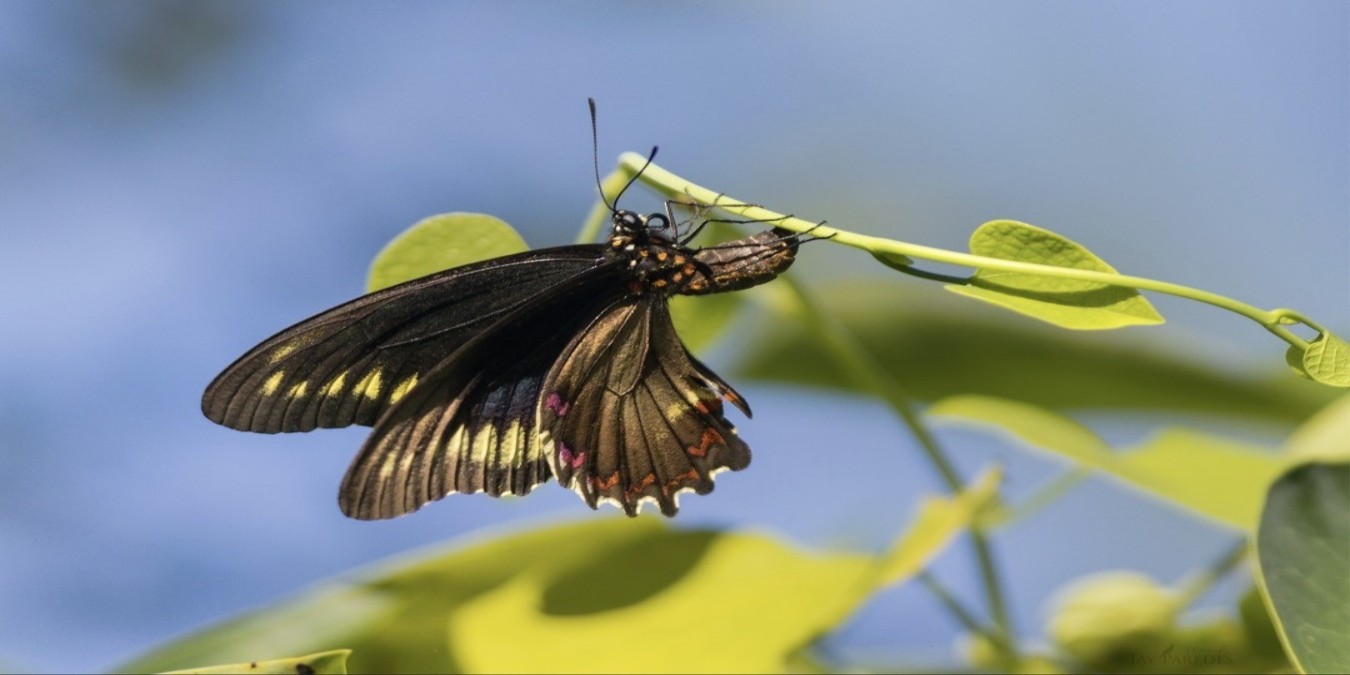Next time you wander through Tobago’s forest edges, maybe along a winding trail in Main Ridge, a sunlit garden in Hope, or a quiet patch of vines climbing an old estate wall, slow your steps. Look toward the curling green tendrils, the young leaves lifting toward the sky, the places where morning light hangs soft on the branches.
There, you might spot a shimmer of gold.
A butterfly dressed in shadows and sunlight.
The Gold-rim Swallowtail, with wings as dark as polished mahogany and edges brushed in soft yellow, has glided through Tobago’s landscapes for generations. Those golden accents aren’t just decoration; they are the signature of an ancient bloodline, one that evolved long before anyone lived on this island. A passing bird sees that bold colouring and hesitates… because this butterfly carries the quiet warning of a creature that cannot be eaten.
Unlike some butterflies that hover delicately above flowers, the Gold-rim moves with intention. It drifts low and slow at first, then rises suddenly, swirling upward like a piece of night caught in the breeze. You’ll find it wherever Tobago’s wild vines grow, especially the pipevine plants that have shaped its entire existence. Their leaves feed its caterpillars, their toxins protect its wings, and their twisting stems are its cradle.
Tobago gives this butterfly everything it needs, and in return, the Gold-rim becomes one of the island’s unsung pollinators. It drifts from bloom to bloom, carrying grains of life across forest patches, abandoned cocoa walks, and village gardens. Naturalists know that where Gold-rims glide, the habitat thrives, the vines are healthy, the air is clean, the ecosystem is in balance.
And those hidden flashes of colour, the soft violets, the warm coral tones tucked along the lower wings? Tobago’s photographers chase that secret glow, waiting for the moment the butterfly tilts just right, and the sunlight reveals the palette beneath the black. Each glimpse feels like nature whispering a treasure only the patient gets to see.
The Gold-rim doesn’t crack like the Cracker or flaunt eyespots like the Buckeye. Instead, it carries its beauty quietly, wrapped in silky darkness and edged with firelight. It invites you to step closer, breathe slower, and look longer. You’ll often spot it perched on a leaf tip, wings partly open, as if it’s deciding whether to stay in the world of shadow or slip back into the sun.
Seeing one up close feels like catching Tobago in a moment of gentle magic, a reminder that the island’s wild wonders don’t always shout. Sometimes, they glide past silently, rimmed in gold.


Comments